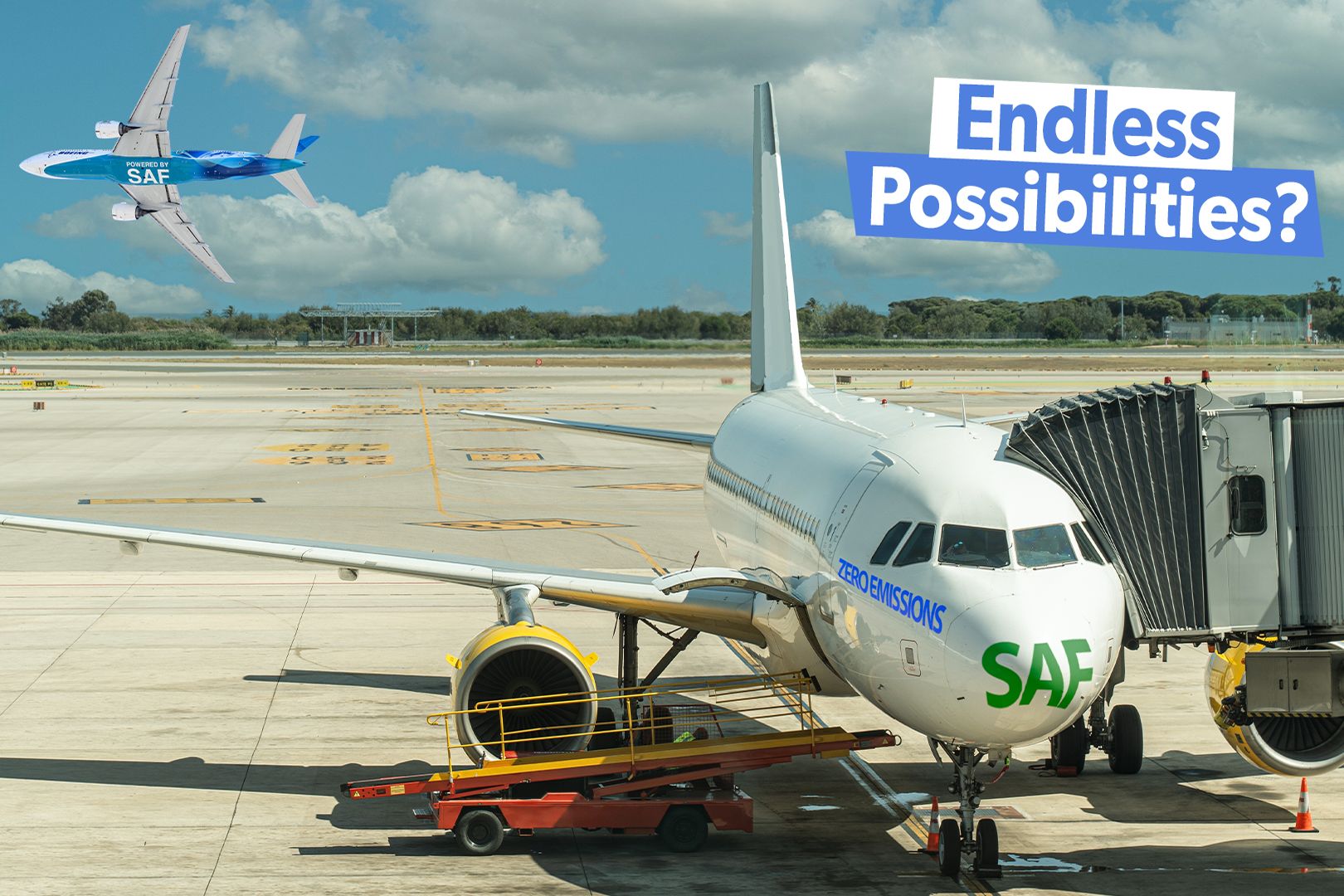Summary Sustainable Aviation Fuel is crucial for reducing aviation emissions; could contribute up to 65% of reductions by 2050. Currently, SAF is often blended with traditional fuels, but the goal is to transition all aircraft to full SAF by 2030. Growth of SAF production is slow; while volumes doubled in 2023, it is only 0.
2% of all aviation fuel used. As the aviation industry looks to reduce emissions, sustainable aviation fuel (SAF) is one of the keys to reaching targets. The aviation industry is working on a huge range of levers to reduce emissions , including more efficient aircraft, various smart systems, and even weather forecasts to avoid aircraft contrails (which are thought to contribute to global warming) .

In the future, it is hoped electric and hydrogen aircraft will be able to be introduced on many routes . But for now, SAF is seen as key. But how much could SAF help the industry? What are SAFs? Sustainable Aviation Fuels are liquid fuels produced from various sources (feedstock), including waste oil and fats, green municipal waste, and non-food crops.
Sometimes called eFuel, SAF can be produced using green hydrogen, capturing carbon dioxide, and using renewable electricity to create synthetic fuels. "Sustainable aviation fuel (SAF) is certified jet fuel (Jet-A/A1). However, unlike traditional jet fuel fully derived from fossil resources, today's SAF is a blend of conventional fossil fuel and synthetic components made from a range of renewable “feedstock” (such as used cooking oils, fats, plant oils, municipal, agricultural and forestry waste).
" - Airbus Solving one problem often gives rise to another. One concern is the use of palm oils grown in tropical countries like Indonesia and Malaysia. The demand for palm oil can lead to deforestation, where the ancient rainforests are cleared to make way for growing palm oil.
IATA strategy towards net-zero CO2 emissions by 2050: 65%: Sustainable Aviation Fuel (SAF) 13%: New technology, electric and hydrogen 3%: Infrastructure and operational efficiencies 19%: Offsets and carbon capture In 2021, Biofuels International wrote, " Indonesia, the world's biggest producer of palm oil, has a mandatory biodiesel programme with 30% palm oil content known as B30, but the government is keen to expand the use of the vegetable oil for energy ." Still, some believe its impact is not so significant, driving 2.3%-5% of tropical deforestation.
The aviation industry as a whole has pledged to achieve net-zero carbon emissions by 2050. How much could SAF reduce emissions? For now, SAF is in an early stage of development, and it will need government policies and other pushes to scale up. The IATA estimates that Sustainable Aviation Fuels could contribute around 65% of the emissions reductions needed by the industry to reach net-zero CO2 by 2050.
The IATA apparently believes that SAF will play a much larger role in reducing emissions than technological improvements. Boeing states that SAF is important to short, medium, and long-haul flights - but particularly long haul as hydrogen technology is expected to be the most compatible with short-haul flights. Sustainable Aviation Fuel emissions reductions Aviation contribution to GHG: 2-3% SAF contribution to reducing aviation emissions: 65% SAF CO2 reduction compared to traditional fuels: 80% IATA says SAF reduces CO2 emissions by up to 80% compared to traditional aviation fuel.
However, when burned, SAFs still release CO2 into the atmosphere, the same as other fuels. But the difference is that petroleum fuels are dug out of the ground, introducing new CO2 into the system. SAFs, by contrast, recycle CO2 already in the carbon cycle in various feedstocks.
To realize carbon emission goals, SAFs will need to be massively upscaled, with most acceleration expected in the 2030s. This will require economies of scale, governmental support, and prices competitive with fossil kerosene. For now, SAFs are more expensive than traditional fuels.
The A321neo XLR will allow United to make its operations profitable and access new markets. Aircraft are being designed to use SAF It is common to blend SAF with traditional jet fuels instead of using 100% SAFs. Most modern aircraft are compatible - or even fully compatible - with running on SAFs.
All Airbus aircraft can currently fly with a maximum 50% SAF blend, with the rest being conventional fuel. However, by 2030, Airbus plans for all of its aircraft to be able to fly with 100% SAF (a goal shared by rival Boeing). Aviation contributes around 2-3% of all human-created greenhouse gas emissions, and if net zero is to be achieved by 2050, then the industry needs to pull its weight.
Aircraft able to use % SAF blend: Airbus current aircraft: 50% Boeing current aircraft: 50% Airbus aircraft in 2030: 100% Boeing aircraft in 2030: 100% In 2023, SAF volumes reached over 600 million liters (0.5Mt). While that is double the amount (300 million liters) produced in 2022, it remains a drop in the ocean.
It is still only 0.2% of all aviation fuel used in 2023, meaning it remains in its infancy. Airbus plans to increase the use of SAF in its operations with a target of 15% by the end of 2024 and at least 30% by 2030.
In April 2024, Boeing reported , " Boeing is buying 9.4 million gallons (35.6 million liters) of blended sustainable aviation fuel (SAF) to support its 2024 U.
S. commercial operations..
. 60% higher than its buy in 2023. " Even military aviation is pursuing SAF and the goal of being net-zero.
The British RAF aims to become net zero by 2040 - ten years ahead of the UK's national goal of being net zero by 2050. The challenges of scaling up are formidable. Airbus points out that " there are challenges associated with limited availability of land and biowaste .
".



















